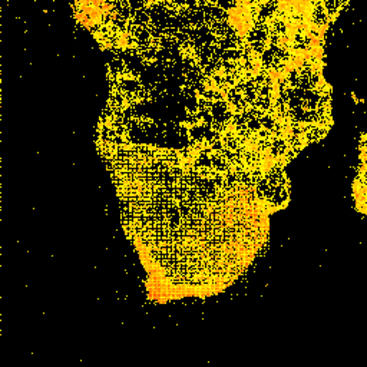Kew botanist David Goyder had a thought-provoking blog post a couple of days back describing the relative lack of floristic data from Angola. Here’s his map of plant collection data for southern Africa, from GBIF:
Angola emerges quite clearly as a gap, particularly the interior. There’s lots of reasons for that, not least landmines, as Goyder points out, and there are also efforts underway to redress the situation. But the thought that the map provoked in me was, of course, whether the situation was similar for crops. So here’s what Genesys knows about crop germaplasm collections in southern Africa:
It seems the answer is a pretty resounding yes. Again, you can clearly trace the borders of Angola by where the genebank accessions end. There is, in fact, though, a very active national genebank in Angola, which has been collecting the country’s crop diversity for years, landmines or no landmines:
A total of 441 accessions were collected during a mult-crop collection in Huila province, Namibi province and Malanga province in 2004. With these collections, NPGRC now has a representative sample from 55% of the total number of districts in the country and representing 60% of the recognized agricultural zones (MIIA).
But when will we be able to see the data?


I have heard from the director of the Portuguese germplasm bank that there was a rich collection in Angola from the colonial period. During the civil war people invaded the bank and ate the seeds, including a duplicate collection that had been prepared to send to Portugal.
They must have been hungrier — or, just possibly, less committed — than Soviet seed bankers during the Siege of Leningrad.